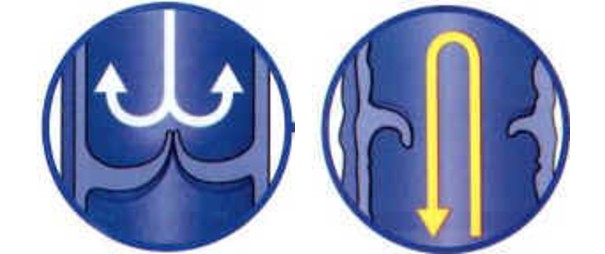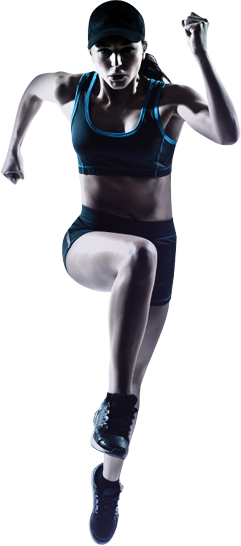Varis Nedir?
Varis, çoğunlukla bacaklarda görülen, toplardamarların genişleyip kıvrımlı ve belirgin hâle gelmesi ile karakterize bir durumdur. Damarlar cilt altında mavi/koyu mor görünebilir; bazı kişilerde gün sonunda artan ağırlık, ağrı, kramp, kaşıntı ve şişlik gibi yakınmalar eşlik edebilir. İleri olgularda cilt değişiklikleri veya yaralar (venöz ülser) gelişebilir; kanama ve yüzeyel pıhtı (tromboflebit) gibi sorunlar da görülebilir. Belirti ve bulgular kişiden kişiye değişebilir; bazı kişilerde hiçbir şikâyet olmayabilir. Cleveland Clinic+1
Nasıl Oluşur?
Toplardamar içindeki tek yönlü çalışan kapakçıklar kanın kalbe doğru akışını destekler. Kapakçık işlevinde azalma ve/veya damar duvarındaki değişiklikler olduğunda geri kaçış (reflü) ve venöz basınç artışı oluşabilir; bu da damarın genişleyerek varise dönüşmesine katkı sağlayabilir. Mekanizma yaş, genetik yatkınlık, hormonal etkiler ve uzun süre hareketsiz kalma gibi etkenlerden etkilenebilir. NCBI+1

Ne Kadar Sık?
Varis yaygın bir durumdur; bildirilen oranlar çalışmaya ve tanımlara göre değişir. Örneğin Edinburgh Vein Study’de gövde (trunkal) varisleri erkeklerde , kadınlarda >strong#<32 civarında bildirilmiştir; Bonn çalışması ise varis prevalansını yaklaşık olarak raporlamıştır. Bu farklılıklar, örneklem ve yöntemlere göre değişkenlik gösterebilir. >span class="" data-state="closed"###NCBI+1
Kimlerde Daha Sık Görülebilir? (Risk Etkenleri)
- Yaş ilerledikçe toplardamar-kapakçık yapısı değişebilir.
- Aile öyküsü/genetik yatkınlık riski artırabilir.
- Kadın cinsiyeti ve hormonlar (gebelik, bazı hormon tedavileri) etkili olabilir.
- Fazla kilo/obezite ve uzun süre ayakta durma/oturma şikâyetleri tetikleyebilir. Bu faktörlerin katkısı bireysel olarak değişebilir.Cleveland Clinic+1
En Sık Nerede Görülür?
Varisler genellikle alt ekstremitede (baldır–bilek hattı) belirginleşir; yerçekimi ve “baldır kas pompası” dinamikleri nedeniyle bacaklar daha sık etkilenir.Cleveland Clinic
Sık Bildirilen Belirtiler
- Ağrı, ağırlık, sızlama, gün sonunda artabilen şişlik,
- Gece krampları, kaşıntı, ciltte renk değişikliği (staz dermatiti/varis ekzeması),
- Bazı kişilerde yalnızca kozmetik görünüm sorunu. Komplikasyonlar arasında kanama, yüzeyel tromboflebit ve venöz ülser sayılabilir; bu bulgular tıbbi değerlendirme gerektirebilir.NICE+1
Not: Bu gruplama, damar çaplarına dayalı pratik bir sınıflamadır; kesin tanı ve tedavi planı için dupleks ultrason değerlendirmesi yararlı olabilir. NICE

Fotoğraf A: normal çalışan kapak ve damarı gösterir. Normal bir kan akışı vardır.
Fotoğraf B: Zarar görmüş ya da zayıflamış kapak vardır. Anormal bir kan akışı vardır. Damar duvarları incelmiş ve gerilmiştir.
Ortadaki fotoğrafta da varisli damarların nerelerde ortaya çıkabileceğini görebilirsiniz.
Ne Zaman Değerlendirme Gerekebilir?
-
Ani şişlik, kızarıklık, ağrı/ısı artışı,
-
Kanama,
-
Bilek çevresinde renk değişikliği, deri kalınlaşması veya iyileşmeyen yara (ülser).
Bu durumlarda bir vasküler/venöz değerlendirme önerilebilir. NICE kılavuzu, semptomlu veya komplike varislerde uygun merkezlere yönlendirmeyi vurgular. NICE+1
Günlük Yönetim İçin Kısa Notlar
-
Hareketlilik, uzun süre ayakta/oturarak kalmaktan kaçınma ve aralıklı bacak elevasyonu,
-
Doğru beden ve uygun düzeyde kompresyon çorabı kullanımı (semptomların hafiflemesine yardımcı olabilir),
-
Kilo yönetimi ve düzenli yürüyüş/yüzme/bisiklet gibi aktiviteler.
Uygunluk ve kompresyon düzeyi için sağlık profesyoneli görüşü yararlı olabilir. Cleveland Clinic
Bu içerik tıbbi tavsiye değildir. Kişisel tanı ve tedavi planı için sağlık profesyoneline başvurmanız önerilir.
Yorumlar
-
5 yıldız0
-
4 yıldız0
-
3 yıldız0
-
2 yıldız0
-
1 yıldız0
Henüz yorum yapılmamış.
variscorabi.com
Mağaza Açın
Satıcı Rehberi
Mağaza Açın
Genel Bilgiler
Satıcı Rehberi
Alşveriş Yardımı
Bültenimize abone olun
variscorabi.com
© 2009 - 2025 variscorabi.com. - bütün hakları saklıdır. Design by EnergoThemes - CS-Cart Themes



 Google ile giriş yap
Google ile giriş yap